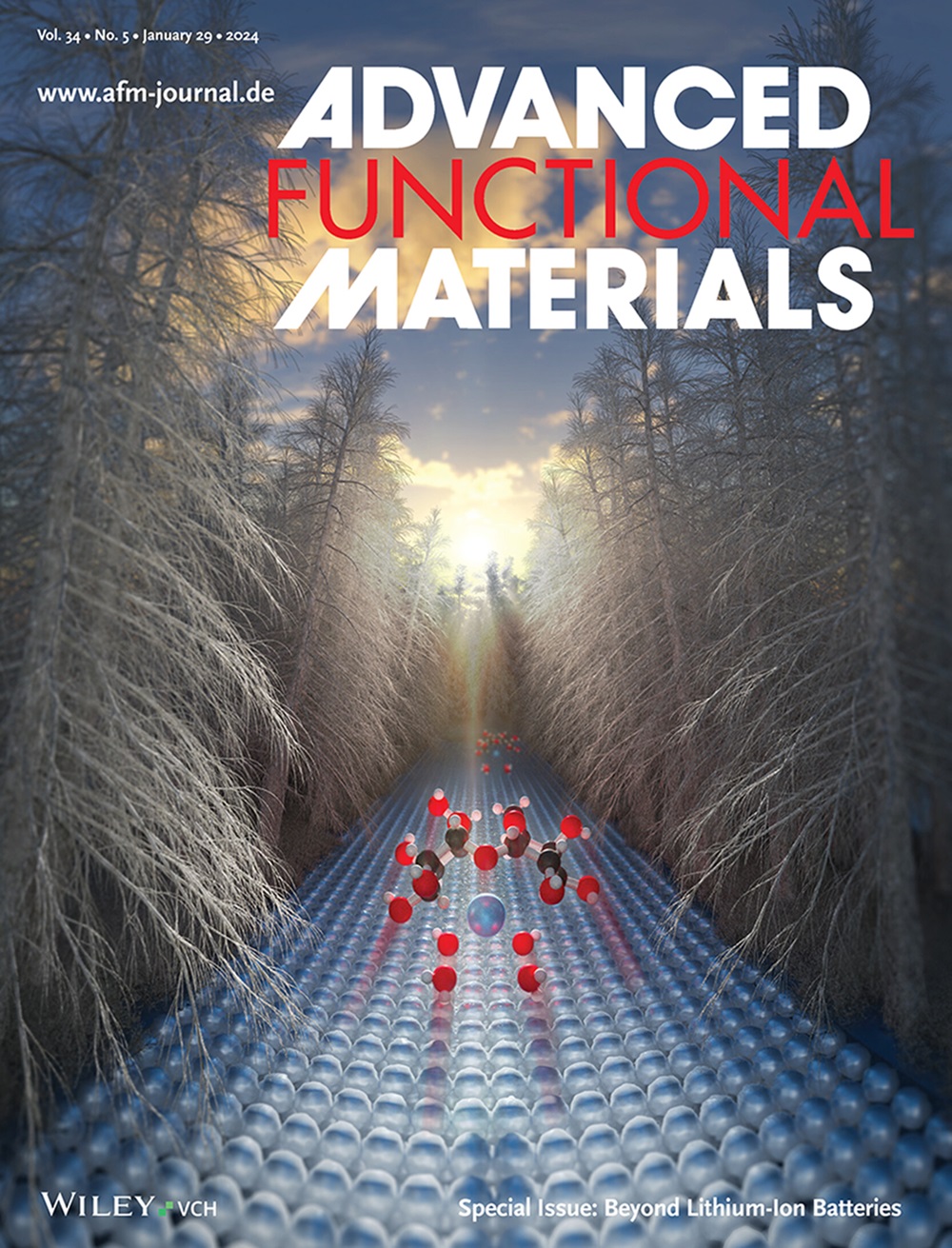A Composite Strategy on H2V3O8 and Carbon Fibers: Boosting the Mechanical and Electrochemical Performance of the Fiber Cathodes in Zinc‐Ion Fiber Batteries
IF 19
1区 材料科学
Q1 CHEMISTRY, MULTIDISCIPLINARY
引用次数: 0
Abstract
Flexible fiber batteries can be integrated into irregular spaces, allowing conventional structures to store energy. Preserving electrochemical performance while improving mechanical strength can substantially broaden their application potential. Here, HH2V3O8和碳纤维复合策略:提高锌离子纤维电池中纤维阴极的机械和电化学性能
柔性纤维电池可以集成到不规则空间中,允许传统结构存储能量。在保持电化学性能的同时提高机械强度,可以大大拓宽其应用潜力。在这里,H2V3O8和镀镍碳纤维首次结合在一起,构建了用于锌离子纤维电池的复合纤维阴极。利用芯材和活性材料各自的优势,采用连续湿纺压法制造纤维阴极。镀镍碳纤维具有高导电性,可以有效地作为电流集电极,其良好的机械性能使纤维电极具有优异的柔韧性和361.9 MPa的极限抗拉强度。由于碳纤维的可变形性和压制步骤,电极获得了矩形截面,这有助于提高电化学性能。当与锌/碳纤维复合阳极和水凝胶电解质组装成电池时,经过1500次循环后,它在3a g - 1下提供138 mAh g - 1的比容量。这项工作证明了纤维电极在机械性能和电化学性能之间的平衡,支持了它们在结构储能应用中的潜力。
本文章由计算机程序翻译,如有差异,请以英文原文为准。
求助全文
约1分钟内获得全文
求助全文
来源期刊

Advanced Functional Materials
工程技术-材料科学:综合
CiteScore
29.50
自引率
4.20%
发文量
2086
审稿时长
2.1 months
期刊介绍:
Firmly established as a top-tier materials science journal, Advanced Functional Materials reports breakthrough research in all aspects of materials science, including nanotechnology, chemistry, physics, and biology every week.
Advanced Functional Materials is known for its rapid and fair peer review, quality content, and high impact, making it the first choice of the international materials science community.
 求助内容:
求助内容: 应助结果提醒方式:
应助结果提醒方式:


